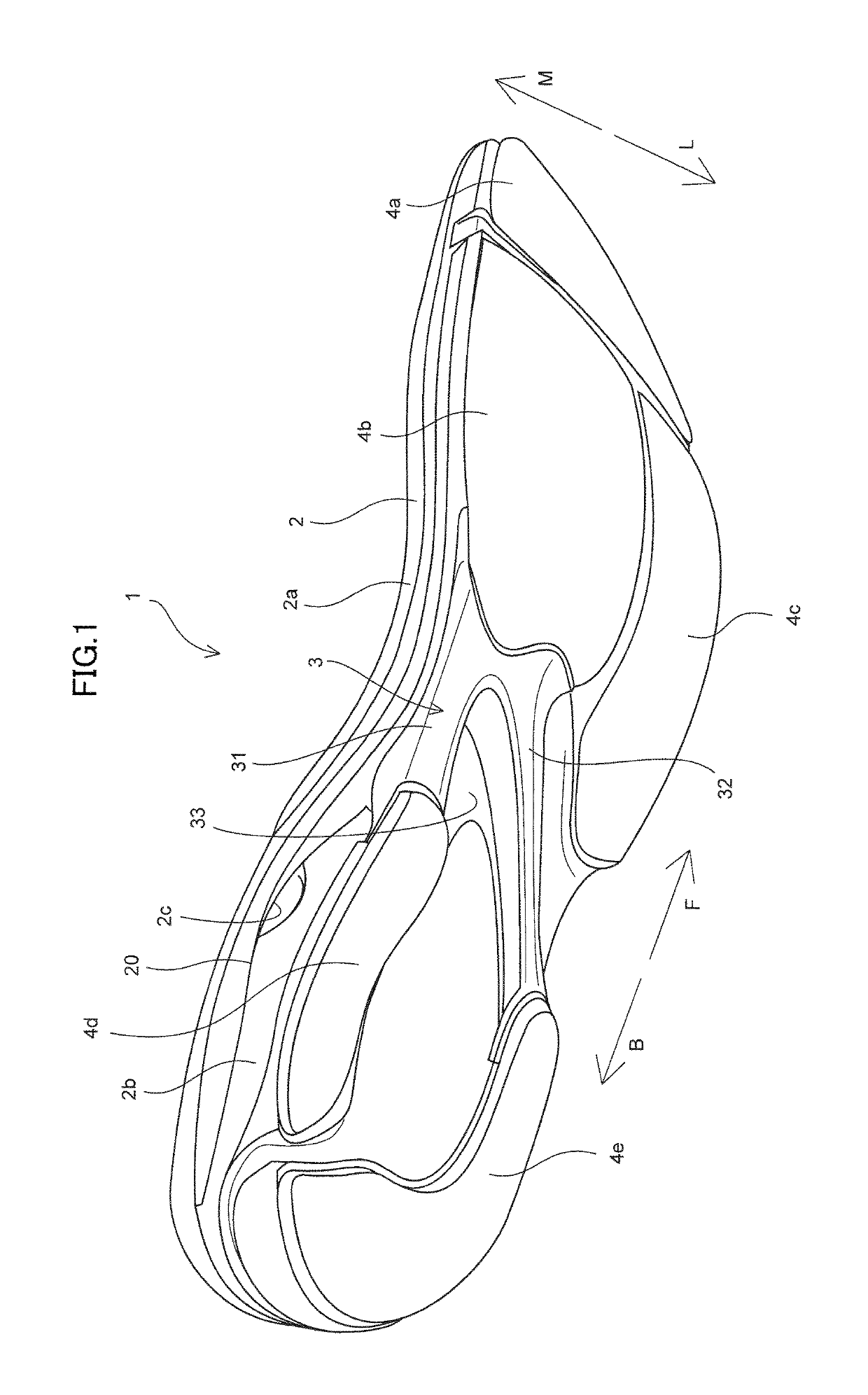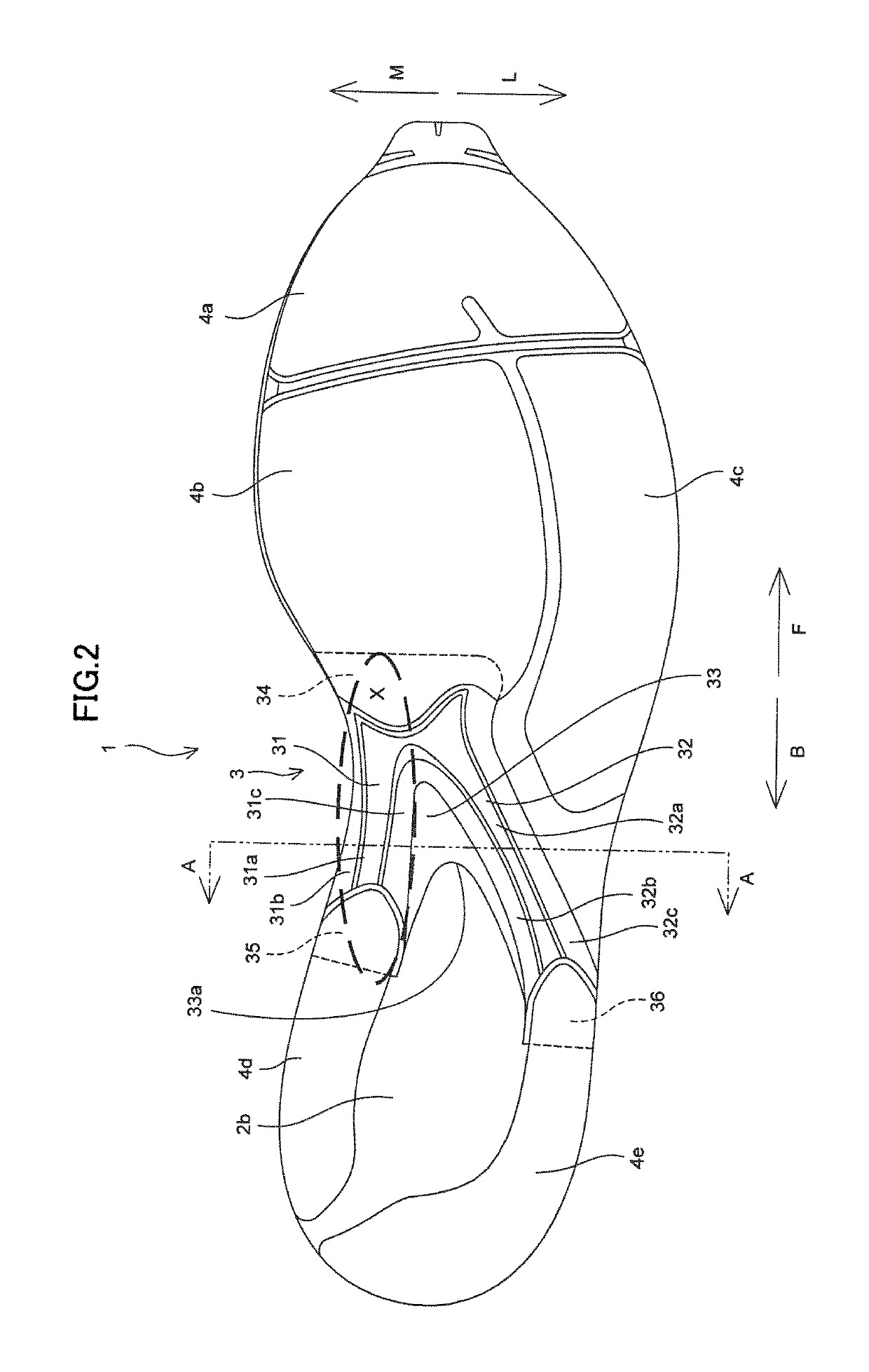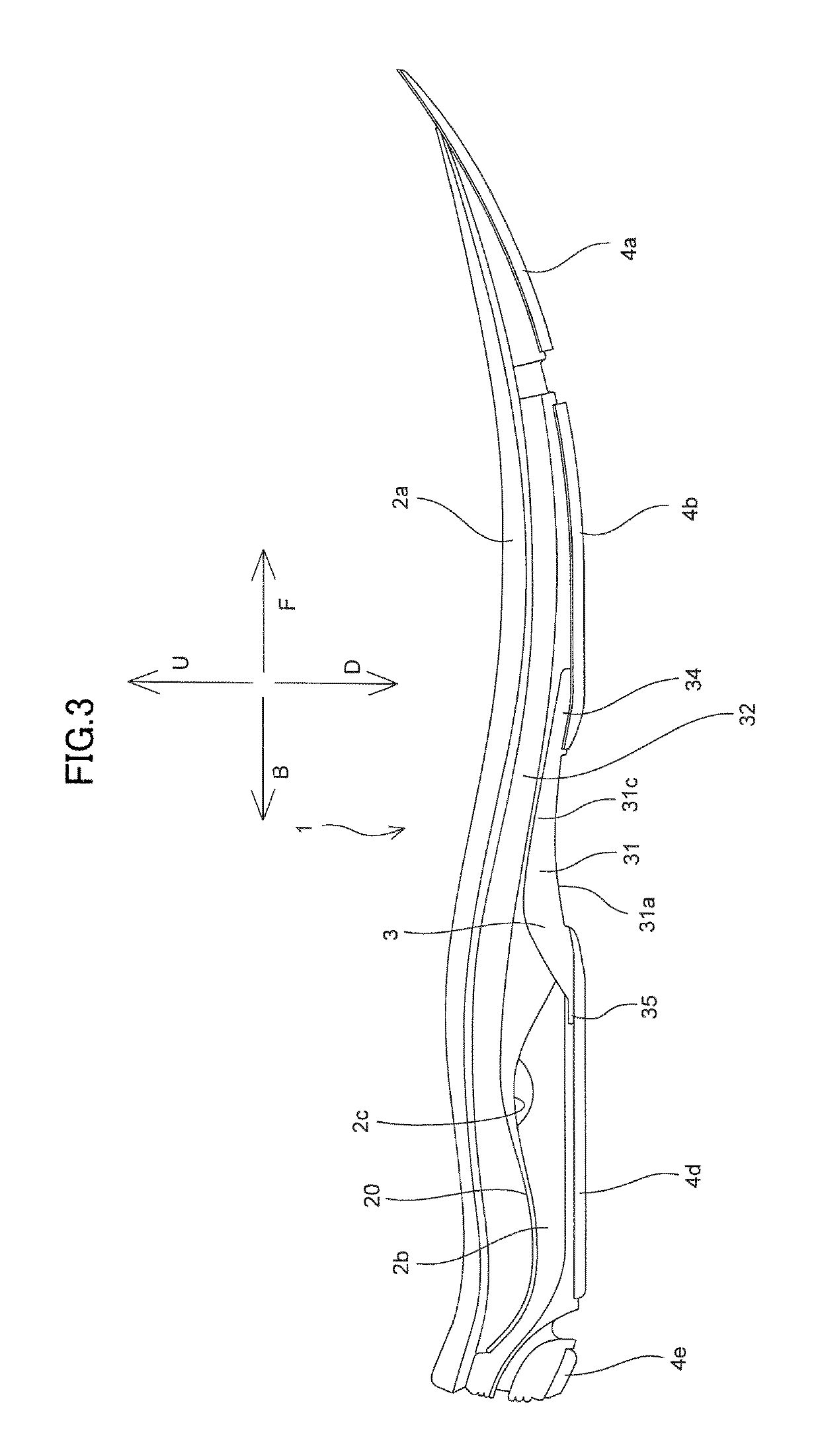Sole structure for shoes
a technology for shoes and soles, applied in the field of shoe sole structure, can solve problems such as user discomfort, and achieve the effect of less likely discomfor
- Summary
- Abstract
- Description
- Claims
- Application Information
AI Technical Summary
Benefits of technology
Problems solved by technology
Method used
Image
Examples
Embodiment Construction
[0025]A sole structure 1 for shoes according to one embodiment of the present invention will be described with reference to FIGS. 1 to 6.
[0026]As shown in FIGS. 1 and 2, sole structure 1 for shoes includes a midsole 2, a plate member 3 made of a hard resin harder than midsole 2, which is joined to a lower surface of midsole 2, and a plurality of outsoles 4a to 4e for plate member 3 joined to the lower surface of midsole 2.
[0027]Midsole 2 is formed from a soft elastic member. For example, midsole 2 is composed of a thermoplastic resin such as an ethylene-vinyl acetate copolymer (EVA) or a foam thereof, a thermosetting resin such as polyurethane (PU) or a foam thereof, or a rubber material such as butadiene rubber or chloroprene rubber or a foam thereof. Midsole 2 has a midsole main body portion 2a extending from a forefoot portion to a heel portion and a heel midsole portion 2b provided in the heel portion and provided below midsole main body portion 2a as shown in FIGS. 1 and 3.
[002...
PUM
| Property | Measurement | Unit |
|---|---|---|
| width | aaaaa | aaaaa |
| height | aaaaa | aaaaa |
| thicknesses t2 | aaaaa | aaaaa |
Abstract
Description
Claims
Application Information
 Login to View More
Login to View More - R&D
- Intellectual Property
- Life Sciences
- Materials
- Tech Scout
- Unparalleled Data Quality
- Higher Quality Content
- 60% Fewer Hallucinations
Browse by: Latest US Patents, China's latest patents, Technical Efficacy Thesaurus, Application Domain, Technology Topic, Popular Technical Reports.
© 2025 PatSnap. All rights reserved.Legal|Privacy policy|Modern Slavery Act Transparency Statement|Sitemap|About US| Contact US: help@patsnap.com



